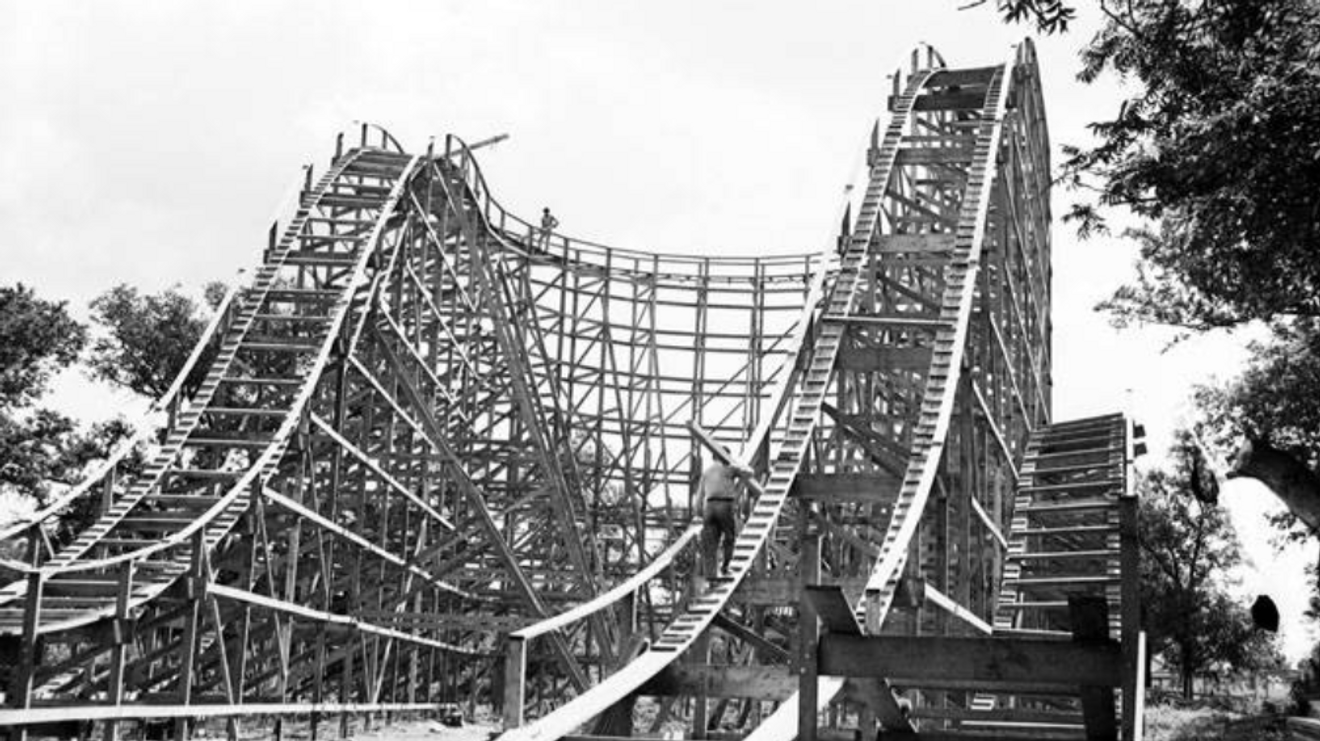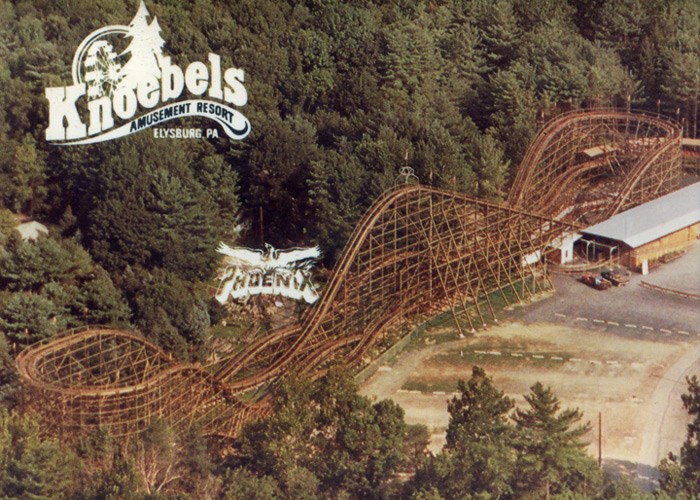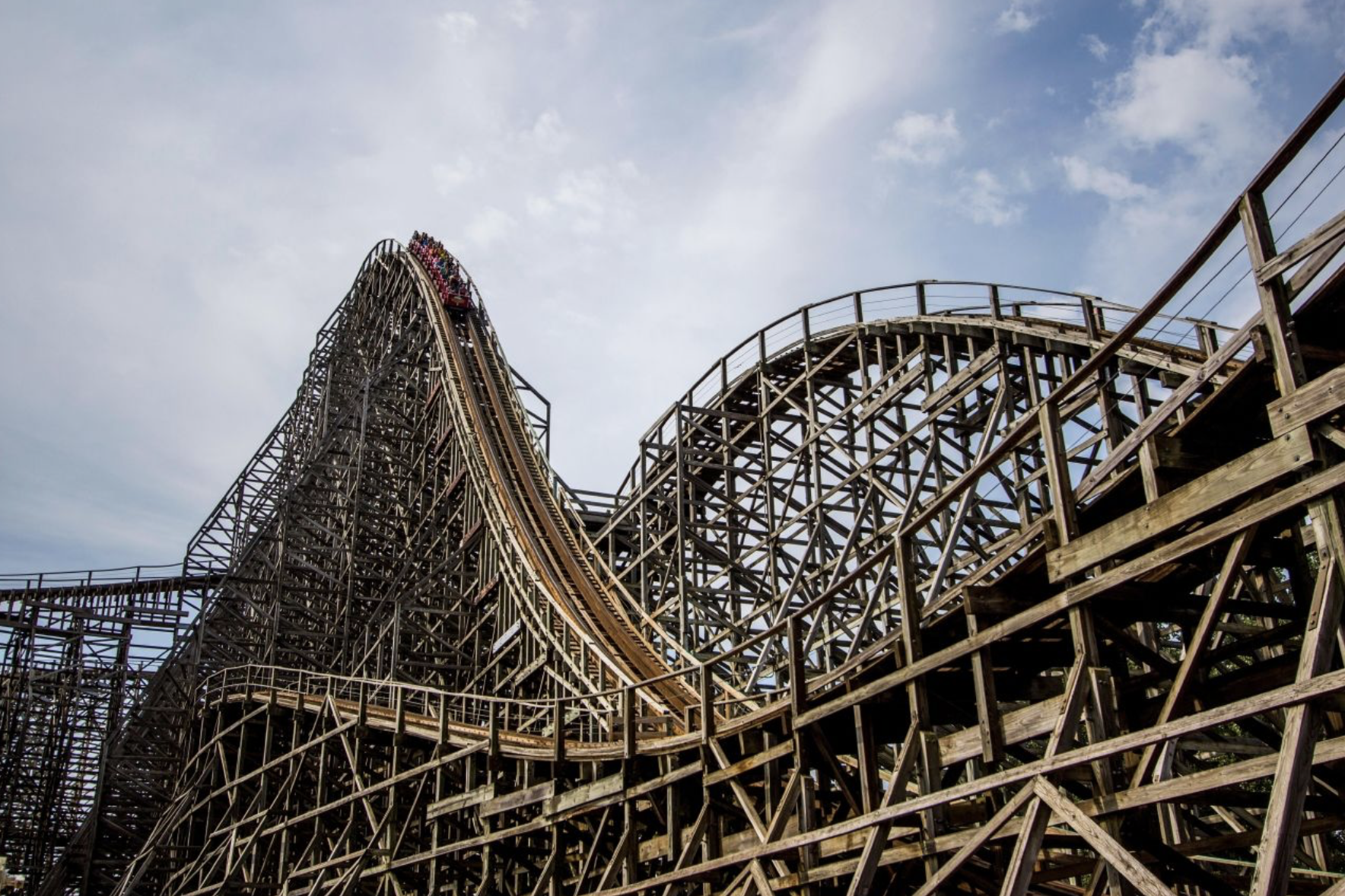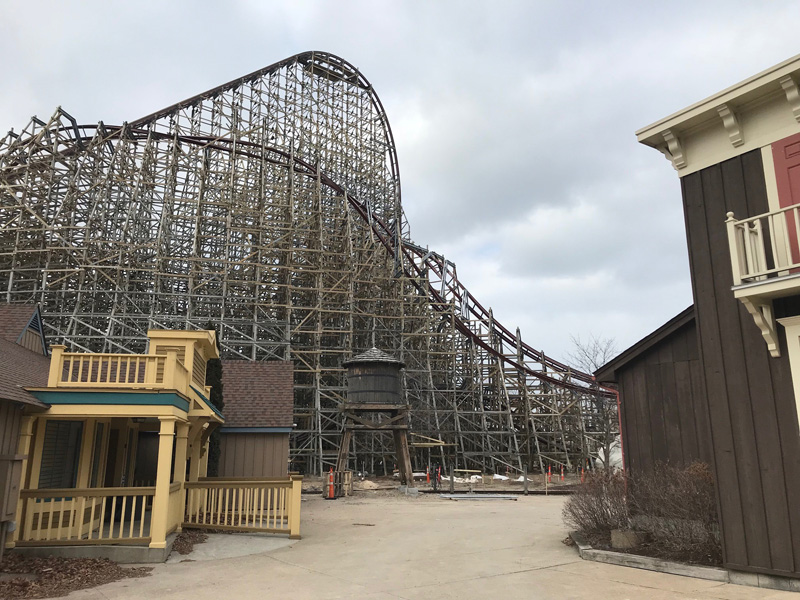Phoenix, Knoebels
ACE, American Coaster Enthusiasts, is a membership-based association with a mission to, “foster and promote the conservation, appreciation, knowledge, and enjoyment of the classic wooden roller coaster and the contemporary steel roller coaster; to create fellowship among its members; and to promote the continued operation of roller coasters” (ACE Online). Its dedication to both the innovation of modern coasters and the preservation of classic coasters makes ACE the most popular and highly-regarded coaster associations in the country. Just one of ACE's many noted "Relocated Coasters" is Phoenix at Knoebels.

Phoenix opened in 1948 as Rocket at Playland Park in San Antonio Texas, manufactured by Philadelphia Toboggan Coasters, a manufacturer perhaps better known for their trains than their coaster creations. It’s a standard out and back layout, barely exceeding 70 feet and 45 miles per hour. This ride is nothing special, not by stats alone, but after closing with the park in 1980, "Dick" Knoebel, of the park's namesake, joined forced with Charlie Dinn of the Dinn Corporation, another classic coaster manufacturer and trailblazer in the industry, to bring this coaster back to life.
Relocating a wooden coaster is a tougher game to play than that of steel. Wooden coasters of the time were often built and profiled by hand and on site, while modern steel coasters and even some wooden coasters, such as Intamin’s prefabricated wooden coasters, are essentially glorified Lego sets. But with Knoebel behind the charge to relocate this coaster to his family amusement park and a little elbow grease, Rocket opened once again, appropriately re-named Phoenix, after a bird of legend that has a knack for rising out of the ashes.

Phoenix is a fun ride, sure, but it’s not a showstopper. It’s old and rickety and you feel it. But more than a ride, Phoenix is a piece of history, over 70 years old, that you can be a part of. In addition, it led the charge for a multitude of wooden relocations and creations to come.
Mean Streak, Cedar Point
Almost any of Rocky Mountain Construction’s I-Box refurbishments could go in this spot, from Busch Gardens Tampa’s highly-anticipated Iron Gwazi replacing a headache-inducing dueling coaster to the first-of-its-kind New Texas Giant, but Mean Streak is perhaps the most iconic of the manufacturer’s reimaginings. Mean Streak opened to the public in 1991, designed by the now-defunct Dinn Corporation. At 161 feet in height and just under 5,500 feet of track, Mean Streak is one beast (no pun intended, I promise) of a ride, even just in its structure and appearance. But, as is a problem with many coaster, wooden or otherwise, as Mean Streak aged, it began to live up to its name a little too well.

I never scored a ride on Mean Streak personally, though I wish I had—simply as a rite of passage, a feather in my proverbial coaster enthusiast cap. A friend of mine who grew up going to Cedar Point on field trips did have an experience with the coaster, however, and says that a ride on Mean Streak messed with her back so bad that she could not stand up upon returning to the station. This is not the only account of Mean Streak inflicting physical pain on its riders. The ride closed at the end of the 2016 season, but not without hope.
Though Rocky Mountain Construction has birthed a number of ground-up hybrid, single-rail, and wooden coasters, the Idaho-based manufacturer is best-known for swooping in at the eleventh hour to bring worn-down woodies back to life. Giving coasters a second chance is their calling card, their business strategy.
After a year of work on the attraction, renewing rotten wooden supports, adding I-Box track, and revamping the layout, Mean Streak breathed life again on May 5, 2018, except now its name was Steel Vengeance.

It’s not an exaggeration to say that Steel Vengeance is one of the best coasters in the world. Countless coaster enthusiast (admittedly, myself included) have this dizzying yet glossy-smooth ride as their number one. Featuring a 90 degree drop, four inversions, a top speed on 74 miles per hour, and the most airtime on any coaster in the world, it’s not hard to imagine why.
I remember my first ride on Steel Vengeance in vivid detail. It was about hour before closing, and the park had cleared out due to some afternoon rainfall. It was my first day at the park after traveling there from Florida, and Steel Vengeance had been closed all day. I’d returned to Hotel Breakers, Cedar Point’s on-site hotel, thinking it was for the night. But when I looked out the window and toward the back of the park, I saw a sporadically-filled train hauling through the dark red track. I didn’t take my bag—I didn’t even take my phone. I just put my shoes on and went back to the park.
There was no line, not even a station wait. It was in the forties outside—not terribly cold but colder than you’d like—and the rain stung my face and eyes. It was uncomfortable and euphoric, the moment of months of anticipation being rectified in two minutes of ride time. I rode it again, then again, then four more times for good measure (because when you catch Steel Vengeance without a line you really don’t have a choice but to marathon it).
I’ll never stop thinking about this second-chance coaster, of what would’ve happened if Mean Streak never had its Lazarus moment—and of what second-chance coasters are still on the horizon for us.

Comments
I wish you included international coasters cause Psyke Underground is incredible
Ripoff of Rock N Roller Coaster revamp of a Schwarzkopf Shuttle Loop
I would like to encourage to rewrite the Phoenix section after doing a little research. While you mention ACE seven times, you completely ignore the one person most responsible for making the project happen - industry legend Dick Knoebel. Dick was the person who decided that relocating a wooden roller coaster was the best way to add one to his family's amusement park. He was the one who spent years searching the country for the right candidate to relocate and was the one who selected the Phoenix, which was owned by a long time family friend. Dick was the one who made the project happen despite the entire industry saying it was not feasible. His park paid for the project which spawned an new generation of wooden roller coaster designer and builders such as Charlie Dinn, Clair Hain, Mike Boodley, John Fetterman and Leonard Adams. ACE was a much newer and smaller organization than it is today and had pretty much nothing to do with the project and they certainly did not provide any financial assistance. To be blunt, this article is an insult to Dick Knoebel and his family's remarkable amusement park.
Thank you for your comment. The article has been updated to reflect the amendments and additions noted.
Thanks, Dick Knoebel is really a remarkable person who, along with his family have created an amazing amusement park and has repeatedly defied the skeptics by doing things that no one said could be done. His seven year effort to recreate an old style flying turns was another example.